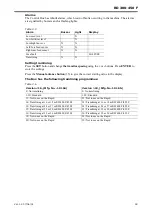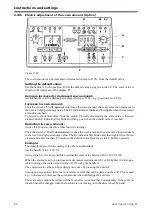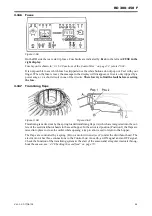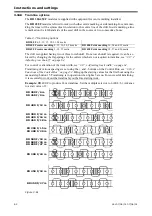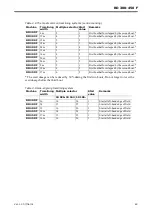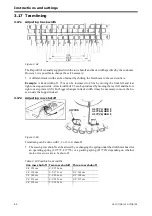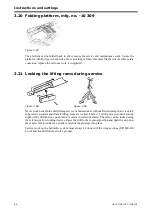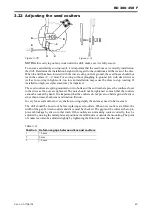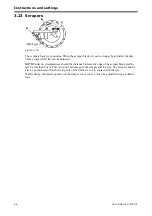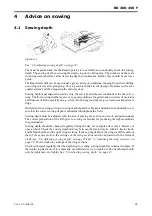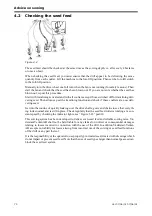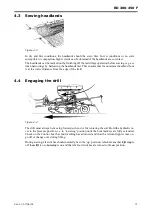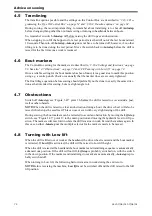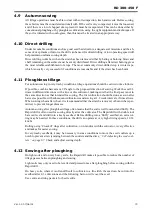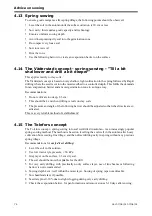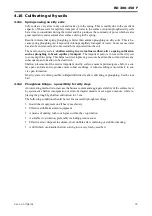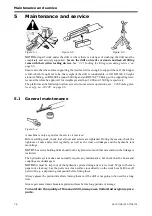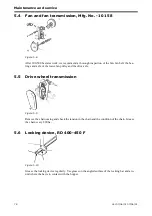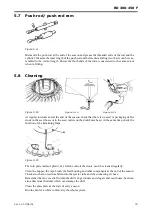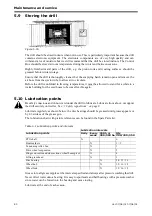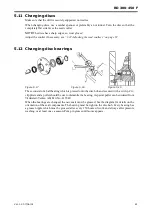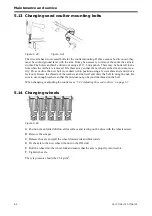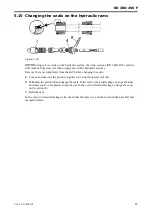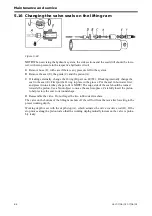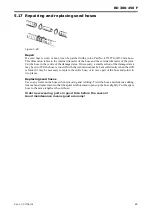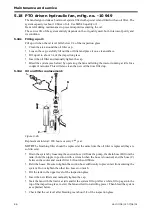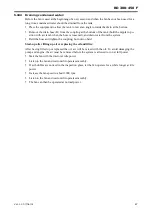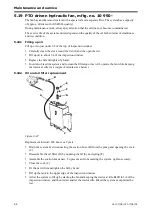
RD 300-450 F
Ver.1.3 07/06/01
73
4.9
Autumn sowing
All tillage operations must be able to deal with soil compaction, trash and weeds. Before sowing,
these factors must be considered and dealt with. If the soil is very compacted, it must be loosened,
and if there is a lot of chopped straw present it must be incorporated. This can be done either by
conventional ploughing or by ploughless cultivation, using the right equipment and techniques. If
the soil is infested with couch-grass, then this must be treated in an appropriate way.
4.10 Direct drilling
Under favourable conditions such as good seed bed structure, adequate soil moisture and the ab-
sence of deep tracks or furrows, the drill can be used for direct drilling. A low operating speed will
help maintain uniform sowing depth.
Direct drilling works best when the straw has been removed either by baling or burning. Straw and
chaff remaining on the surface must be evenly distributed. Direct drilling after straw burning gives
the most reliable establishment of crops. The most commonly direct-drilled crop is winter rape,
which is usually very successful if conditions are reasonable and if the straw has been burnt.
4.11 Ploughless tillage
For autumn sowing in very trashy conditions, tillage operations should be carried out as follows:
If possible, combine harvest at a 90
o
angle to the proposed direction of sowing. Work the soil 2-3
times in different directions with a tine or disc cultivator, making sure that the final pass is not in
the same direction as that intended for sowing. The first cultivation should be done as soon after
harvest as possible, with subsequent cultivation/s and sowing at 1-2 week intervals, if time allows.
When sowing wheat after wheat, it is recommended that the straw be removed, or burnt where per-
mitted, to prevent fungal diseases.
Autumn sowing after ploughless tillage often means that the soil is well loosened and fluffy. The
Rapid drill is often used for sowing directly after the cultivator. The Rapid drill with double tool
bars can level and drill into a trashy seedbed. Before drilling into a ‘fluffy’ seedbed, an extra rol-
ling may be needed. In these conditions, the drill can operate at very high driving speeds, 12-14
km/hr.
Rolling using ‘Crosskill’ rings after cultivation, or in tandem with the cultivator, is very effective
and makes for easier sowing.
In very trashy seedbeds, it may be necessary in some conditions to move the seed coulters up a
notch to prevent straw jamming between the coulters and the discs, ”3.22 Adjusting the seed coul-
ters” on page 67. Check and adjust sowing depth.
4.12 Sowing after ploughing
On light soils and on very heavy soils, the Rapid drill makes it possible to reduce the number of
tillage passes between ploughing and sowing.
Light soils may only need to be levelled and pressed once after ploughing before sowing with the
Rapid drill.
On heavy soils, where it is often difficult to cultivate to a fine tilth, the seed can be cut into the
seedbed after 2-3 cultivations and the following harrow will cover the seed.
Use centre and wing packers for best results.
Summary of Contents for RAPID RD F Series
Page 1: ...Ver 1 3 07 06 01 900107 en Instructions Seed drill RAPID series RD 300 450 F No 10 026 11 999...
Page 2: ...2 Ver 1 3 07 06 01...
Page 6: ...6 Ver 1 3 07 06 01...
Page 16: ...Assembly instructions 16 Ver 07 06 01 07 06 01...
Page 23: ...RD 300 450 F Ver 1 3 07 06 01 23...
Page 41: ...RD 300 450 F Ver 1 3 07 06 01 41...
Page 47: ...RD 300 450 F Ver 1 3 07 06 01 47...
Page 108: ...Appendices 108 Ver 07 06 01 07 06 01 7 4 Electrical diagram Figure 7 8 307335...

